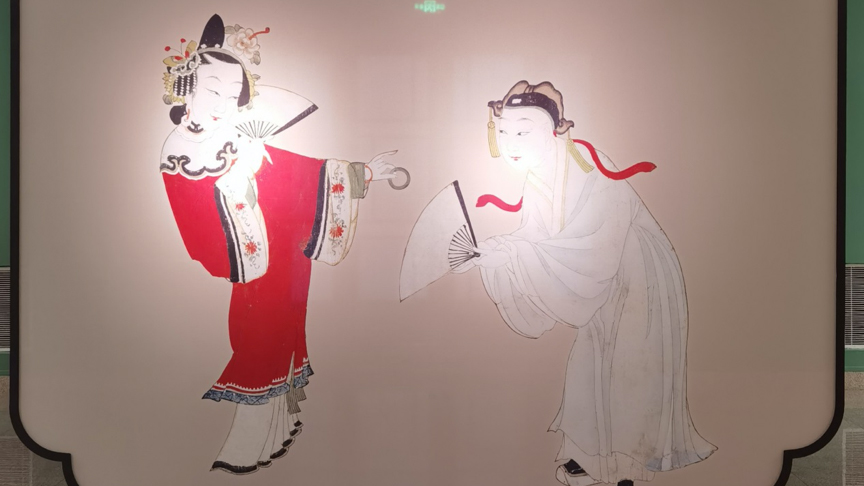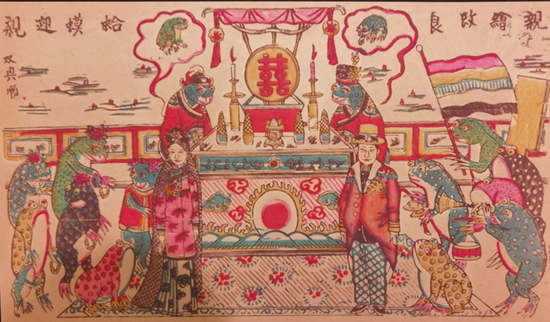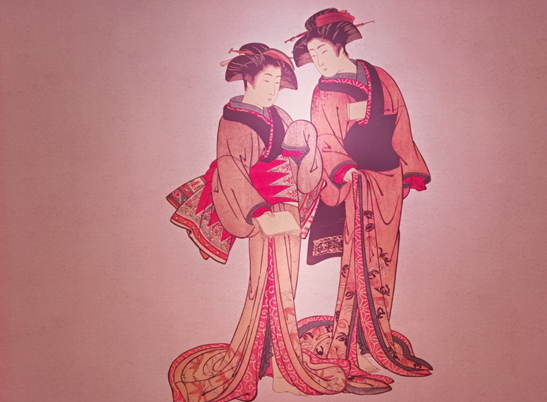03:15

Buddhist art has had a tremendous influence on the development of Japanese art throughout history. From the Tang Dynasty, more than a thousand years ago, right to the ink paintings of the subsequent Song and Yuan dynasties.
The development of wood-carving and lithographic printing skills helped promote Chinese woodblock prints and Japanese Ukiyo-e.

Chinese woodblock prints "Frogs' wedding." /CGTN
Chinese woodblock prints "Frogs' wedding." /CGTN
Woodblock prints have been integral in Chinese New Year celebrations for more than a thousand years. Paintings in Japan were once just a luxury for the country's nobility, but it has since, due to mass production with printing techniques, become a common comfort for all.
The National Art Museum of China has dozens of examples. "Recently, many of our Japanese friends, like the diplomats from the Japanese Embassy in China, visited the exhibition, and they were surprised. They said they did not expect a Chinese museum to have such a large collection of Japanese Ukiyo-e paintings, and many of them are famous masterpieces, and have great influence around the world," said Wu Weishan, director of the National Art Museum of China
These two art forms, both stunning examples of their countries' heritage, have many similarities. They went through similar stages of development from the 17-19th centuries. They both benefited from social stability, the development of a commodity economy and the maturity of the multi-color woodblock printing technique. Bright and rich colors were favored by folk artists, and the skill of "drawing lines and then filling in the colors" is largely a characteristic of oriental surface decorations.
And, the differences are also obvious. The Chinese woodblock prints feature positive themes with a warm, joyful flair. Artists try to express people's wishes for a better life and reflect their optimism. And the Japanese Ukiyo-e mainly focuses on beauties, kabuki and scenic spots, and depicts a beautiful world of fantasy and melancholy. It also laments the limitations of life.

Japanese Ukiyo-e depicting beauties. /CGTN
Japanese Ukiyo-e depicting beauties. /CGTN
Peak time for the Chinese woodblock prints -- during the Ming and Qing dynasties -- is believed to have brought about the rise and development of the Japanese Ukiyo-e art form.
"Japanese Ukiyo-e absorbed a lot of ideas from Chinese woodcuts in the Ming Dynasty, especially those created by Suzhou artists. So Japanese artists show great respect to Chinese artistic creations in history. The Japanese Ukiyo-e also had a great influence on modern European painting, and clues can be found in the works of Vincent van Gogh and many other Impressionists. In Chinese woodcuts, Japanese Ukiyo-e and Impressionist paintings in Europe, we could find what human aesthetics have in common," said Wu.
The exhibition featuring the two related art forms runs through October 15 at the China National Art Museum.